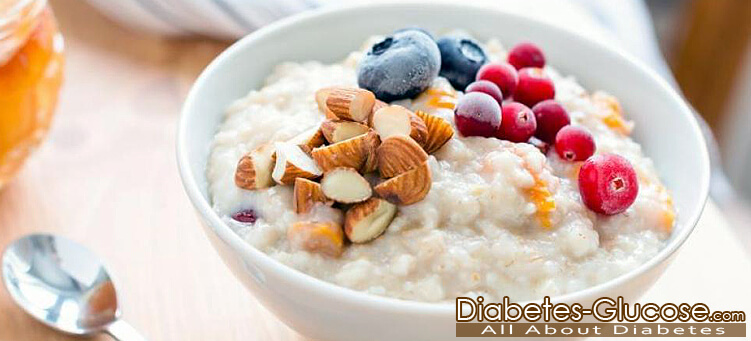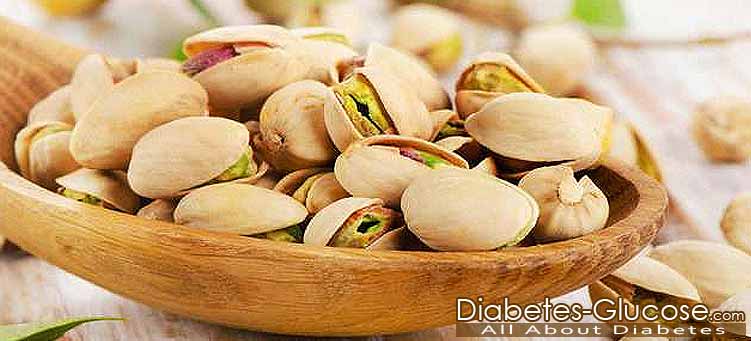Pros & Cons of oatmeal for diabetes. Diabetes is a metabolic condition that affects how the body either produces or uses insulin. This makes it difficult to maintain blood sugar, which is crucial for the health of those with diabetes. When managing blood sugar, it’s important to control the amount of carbohydrates eaten in one sitting, since carbs directly affect blood sugar. The American Diabetes Association’s general recommendation for carb intake is to consume 45-60 grams per main meal, and 15-30 grams for snacks. It’s also important to choose nutrient-dense types of carbohydrates over refined and processed carbs with added sugar.
This means that what you eat matters a great deal. Eating foods that are high in fiber and nutrients but low in unhealthy fat and sugar can help maintain a healthy blood sugar level, as well as improve your overall health.
Oatmeal
Oatmeal offers a host of health benefits, and can be a great go-to food for those with diabetes, as long as the portion is controlled. One cup of cooked oatmeal contains approximately 30 grams of carbs, which can fit into a healthy meal plan for people with diabetes.
Oatmeal has long been a common breakfast food. Oatmeal is made of oat groats, which are oat kernels with the husks removed. It’s typically made of steel cut (or chopped), rolled, or “instant” oat goats.
Oatmeal is cooked with liquid mixed in and is served warm, often with add-ins like nuts, sweeteners, or fruit. It can be made ahead and reheated in the morning for a quick and easy breakfast.
Because oatmeal has a low glycemic index, it can help maintain glucose levels. This can be beneficial for people with diabetes, who especially need to manage their blood sugar levels. Oatmeal in its pure form may reduce the amount of insulin a patient needs. Oatmeal can also promote heart health, which is important because diabetes patients are prone to heart disease.
Pros of oatmeal for diabetes
Adding oatmeal to your diet to help manage diabetes has both pros and cons. The pros of adding oatmeal to your diabetes diet include:
- It can help regulate blood sugar, thanks to the high fiber and low glycemic index.
- It’s heart-healthy and can lower cholesterol.
- It may reduce the need for insulin injections.
- If cooked ahead, it can be a quick and easy meal.
- It’s high in fiber, making you feel full longer and helping with weight management.
- It’s a good source of long-term energy.
- It can help regulate digestion.
Cons of oatmeal for diabetes
For most people with diabetes, consuming oatmeal does not have a lot of cons — unless you choose to eat certain versions of oatmeal that are laden with sugar and artificial flavoring.
Oatmeal can have negative effects for those who also have gastroparesis, which is delayed gastric emptying, and these can be severe. For those who have diabetes and gastroparesis, the high fiber in oatmeal can be harmful.
In general, for diabetes patients without gastroparesis, the biggest cons of adding oatmeal to your diet include:
- Bloating, due to the high fiber content. This can be reduced by drinking water as you eat.
- Flatulence due to the fiber content. Drinking water while eating can also help to reduce flatulence.
- The add-ins can work against you. Some people will add, or buy instant packets that contain, extra sugar, sweetener, or added flavorings that are harmful to a diabetes diet.
Do’s and don’ts of oatmeal and diabetes
Oatmeal can be a great addition to a diet to help manage diabetes, but only when it’s prepared correctly.
When adding oatmeal to a diabetes diets, there are several things you should or shouldn’t do to maintain the health benefits it offers.
The do’s
- Add cinnamon, nuts, or berries.
- Choose Irish or steel cut oats.
- Use low-fat milk or water
There are several do’s you can add to your oatmeal preparation list to increase and maintain the positive health benefits of oatmeal.
When eating oatmeal, here’s what you should do:
- Eat it with a protein or healthy fat such as eggs, nuts or Greek yogurt. Adding 1-2 tablespoons of chopped pecans, walnuts, or almonds can add protein and healthy fat, which can further help stabilize blood sugar.
- Choose Irish or steel cut oats. Irish and steel cut oats have a higher amount of soluble fiber, which helps regulate blood sugar.
- Use cinnamon. Cinnamon is full of antioxidants, has anti-inflammatory properties, and may help reduce the risk of heart disease. It may also improve sensitivity to insulin and may help lower blood sugar levels.
- Add berries. Berries also have antioxidants and good nutrients, and can act as a natural sweetener.
- Use low-fat milk or water. Using low-fat milk can increase nutrients without adding too much fat to the meal, though water is preferable to cream or higher fat milk for those trying to reduce fat content. However, keep in mind that the amount of milk used needs to be accounted for toward total carb intake for your meal. Eight ounces of regular milk contains approximately 12 grams of carbs.
The don’ts
- Don’t use prepackaged or instant oatmeal.
- Don’t add too much dried fruit or sweetener.
- Don’t use cream.
Just as there are several great choices that those with diabetes can make when preparing oatmeal, there are several choices that can be detrimental to those with diabetes.
When eating oatmeal, here’s what you should not do:
- Don’t use prepackaged or instant oatmeal with added sweeteners. Instant and flavored oatmeal often comes full of added sugar and salt, neither of which is good for a diabetes diet. They also have less soluble fiber. Choose a variety listed above in the do’s section.
- Don’t add too much dried fruit. Just a small amount of dried fruit can have a high amount of carbohydrates. Be mindful of your portions.
- Don’t add too much sweetener. People commonly add sugar, honey, brown sugar, or syrup to oatmeal, but this combats the health benefits oatmeal offers to those with diabetes.
- Limit or avoid using cream. Use either water or low-fat or skim milk to make oatmeal.
Other health benefits of oatmeal
In addition to the blood sugar and heart health benefits that oatmeal offers, it can help with:
- lowering cholesterol
- weight management
- skin protection
- reducing chances of colon cancer
Oatmeal is slow to digest, meaning that you’ll feel full longer. This can help with weight loss and weight management goals. It can also help to regulate the skin’s pH, which can reduce inflammation and itching.
The takeaway
When prepared correctly, oatmeal has a host of aspects that can be beneficial to anyone, but especially to those with diabetes, if eaten in the right portions. You can start the day with a meal that regulates blood sugar and provides a long-term source of energy, as well as improves your heart health. By choosing the right add-ins, and avoiding the wrong ones, oatmeal can be an ideal breakfast for those with diabetes.
Always make sure to monitor your blood sugar to see how oatmeal affects you individually. Each patient with diabetes is different, so always consult your doctor before making any major dietary alterations. Qualified nutritionists can also help with this.
Source: healthline.com



